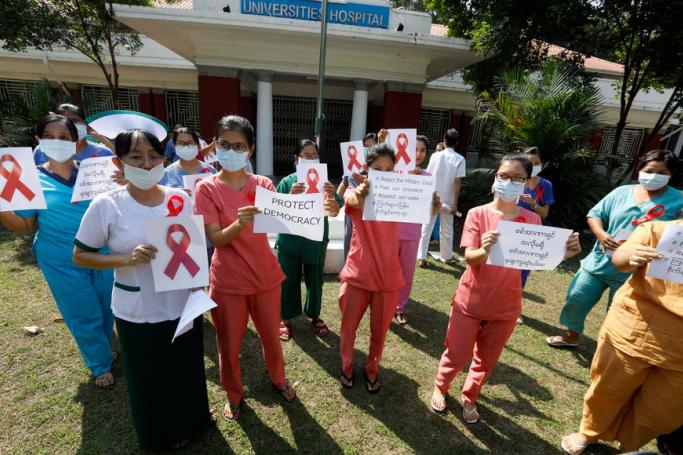Two days after the coup d’état on 1st February 2021 in Myanmar, a movement was led by medical doctors nationwide to protest the military coup that overthrew the elected civilian government. This movement is known as the civil disobedience movement (CDM). Shortly after, many other professions including engineers, teachers joined the CDM. Here, the ethical dilemma on the Myanmar medical professions particularly medical doctors leading the CDM has become a debate.
Myanmar medical profession opposition against the military is not new. The Black Ribbon Movement 2015 was the very first public protest the militarization of the Ministry of Health and Sports in Myanmar. In the current coup, the medical doctors’ strikes in Myanmar through the CDM are on behalf of justice for the country, which is key towards reform of the fragile health system. The decision to join the CDM means losing jobs, income, and further career promotion. It is a remarkable action, with medics putting their lives at risk to join the movement. The CDM health care workers remain the front-line workers in the fight against the COVID-19. Amidst the fight against COVID-19, they faced a military coup, and now find themselves on the frontline against the military regime. Despite the CDM, these same medical doctors are providing health care services to those in need of health care in different shelters; monasteries, charity clinics, mobile clinics or online. These medical doctors are being arrested for saving lives by the military junta. These arrests and detainments are unacceptable and against humanitarian law.
In the public sector in Myanmar, medical doctors work 5-15 days of 24-hours duty and nurses work for 6-12 days in one month in addition to day-duty on weekdays, and regular morning, afternoon, and night shift systems. The working hours can be 24-hour emergency on-duty on a daily basis for the station level hospitals. The public sector salary is standardized across ministries for the same ranks. And health-sector salary is considered low. On average, the monthly salary for a public-sector medical doctor is the equivalent of about US $ 200. This includes housing, transport, and other benefits. However, motivation, passion, and a sense of professionalism are the main reasons why these medical doctors remain in low-paying public-sector jobs. Many of these medical doctors’ practice in the private sector as a part-time job to cover basic living costs. Up until now, none of these doctors were on strike for such low payment or enormous workloads. However, in many other countries, for example, Nigeria, Sierra Leone, South Korea and Ireland, many medical doctors striked on behalf of their beneficiaries for the improvement of the health system, for better wages or suitable working hours. None of these strikes led to excess patient mortality. A review looking at the association between doctors strikes and mortality reported a paradoxical result. The review found that mortality was reduced during the strikes with different reasons such as reduction in elective surgeries and more resource allocation to emergency care.
After being long neglected during the military regime (between 1975-2011), an improvement in the health sector has been seen since the transition towards civilian government in 2011. Health care expenditure has increased dramatically; 4.66% of the country's gross domestic product (GDP) in 2017 compared to 1.85% of GDP in 2008. Strong political commitment has been made to achieve Universal health coverage. As a result, the Ministry of Health and Sports was allocated $102 million (equivalent of 143 billion kyats) for free medicine alone in the 2019/20 fiscal year. Government hospitals were able to provide more essential healthcare services free of charge to the public. The government had committed to co-financing the Global Alliance for Vaccines and Immunizations (GAVI) supported vaccines. This in-turn has increased the GAVI supported introduction of WHO-recommended newer vaccines under the national immunization programs (Rubella and IPV in 2015, PCV in 2016, Japanese Encephalitis vaccine in 2018, rotavirus and birth-dose hepatitis B vaccine in 2020, most recently the human papillomavirus vaccination). This has been a tremendous improvement compared to the previous immunization milestones in Myanmar. These improvements were possible only during the civilian government. Such improvements were of some examples, why Myanmar medical doctors and health-care workers are at the frontlines of the fight against the military regime.
Su Myat Han, Khin Zay Yar Myint and Kyaw San Lin are members of International Society of Myanmar Scholars and Professions (ISMSP-MM)












